
6-12 #Putitdown : Apple’s series of announcements including Apple Intelligence; MediaTek is allegedly developing an Arm-based personal computer chip for Windows; Apple’s 7.9” foldable device is expected in 2026; etc.

Qualcomm has launched the Snapdragon 6s Gen 3 SoC. It is available in a 4G (SM-6370) and a 5G (SM6375-AC) variant. The Snapdragon 6s Gen 3 is based on a 6nm TSMC node. It has two CPU clusters: one with two Cortex A78 cores, clocked at up to 2.3 GHz and another one with six Cortex-A55 ones, working at up to 2.0 GHz. The Snapdragon 6s Gen 3 gets an Adreno 619 GPU and a FastConnect 6200 modem. It supports LPDDR4X RAM and UFS 2.2 storage. In contrast, the Snapdragon 6 Gen 1 chipset from 2022 is a 4nm chip with two more big Cortex-A78 CPU cores, a more powerful Adreno 710 GPU, LPDDR5 RAM, UFS 3.1 storage, a FastConnect 6700 modem and 4K 30fps video capture support. All of these technical features make it better than the new Snapdragon 6s Gen 3. (GSM Arena, Qualcomm, Android Authority, CN Beta)
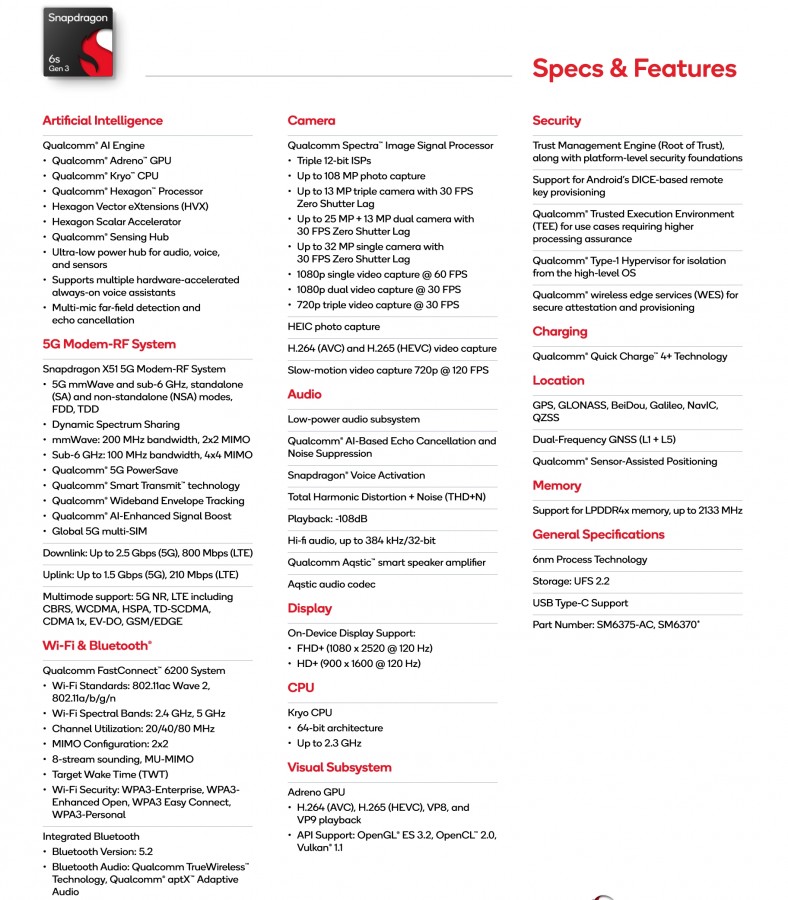
According to Qualcomm CEO Cristiano Amon, beyond mobile devices, PCs, and automotive applications, Qualcomm is now focusing on data centers. In the long term, these products will eventually adopt Qualcomm’s in-house developed Nuvia architecture. Amon noted that Qualcomm’s Snapdragon X Elite and Snapdragon X Plus have been developed with superior NPU performance and battery life. Moreover, Snapdragon X Elite is just the first generation, which focuses more on performance supremacy, while the upcoming generations may put more emphasis on computational power, and integrating these into chip design. (CN Beta, TrendForce)
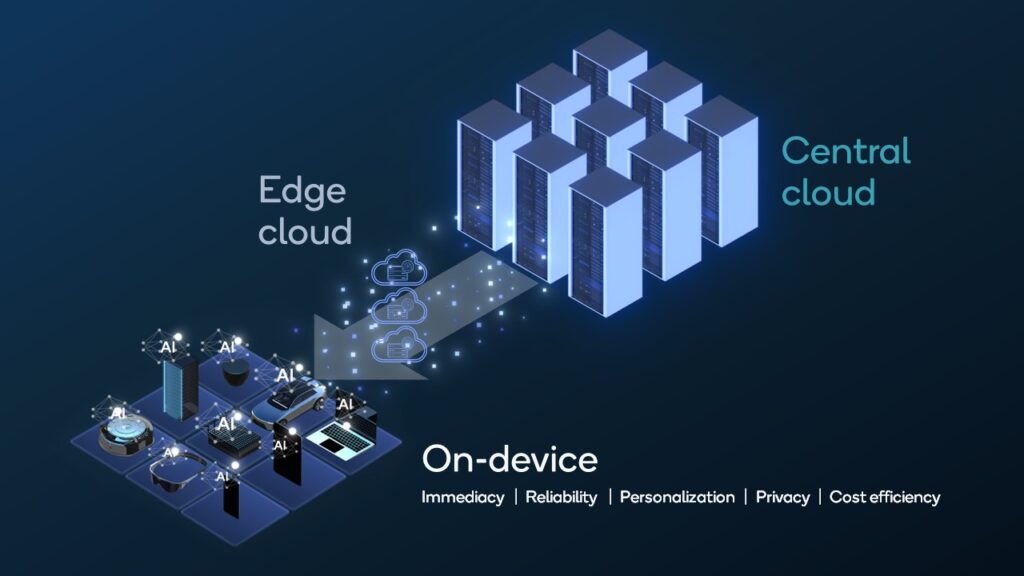
In answer to a query regarding whether TSMC would be challenged by Huawei in chipmaking technology, company CEO C. C. Wei has stated that there is no need to remark because TSMC remains unchallenged. AMD CEO Lisa Su recently stated that there is a strong collaboration between AMD and TSMC. Similarly, Nvidia CEO Jensen Huang shared his gatherings in Taiwan with TSMC founder Morris Chang, indicating a positive relationship between the two companies. TSMC chairman Mark Liu has stated that TSMC will conduct monthly assessments of its expansion and financial investments over the next 5 years. Furthermore, Liu voiced greater excitement for the burgeoning field of AI than earlier comments. TSMC diligently monitors and does not disregard manufacturing capacity requirements for AI and smartphones. (Android Headlines, Digitimes, Zaobao, Wealth.com)

Nvidia and AMD are gearing up to launch gaming laptops that include the AI Copilot Plus features that Microsoft just announced for Qualcomm-powered laptops. Nvidia has briefly teased that “RTX AI PC” laptops are on the way from Asus and MSI that will eventually include Copilot Plus PC features. Nvidia is also collaborating with Microsoft on the underlying AI models that are being built into Windows 11. The collaboration will provide application developers with easy application programming interface (API) access to GPU-accelerated small language models (SLMs) that enable retrieval-augmented generation (RAG) capabilities that run on-device powered by Windows Copilot Runtime.(The Verge, Nvidia, AMD)
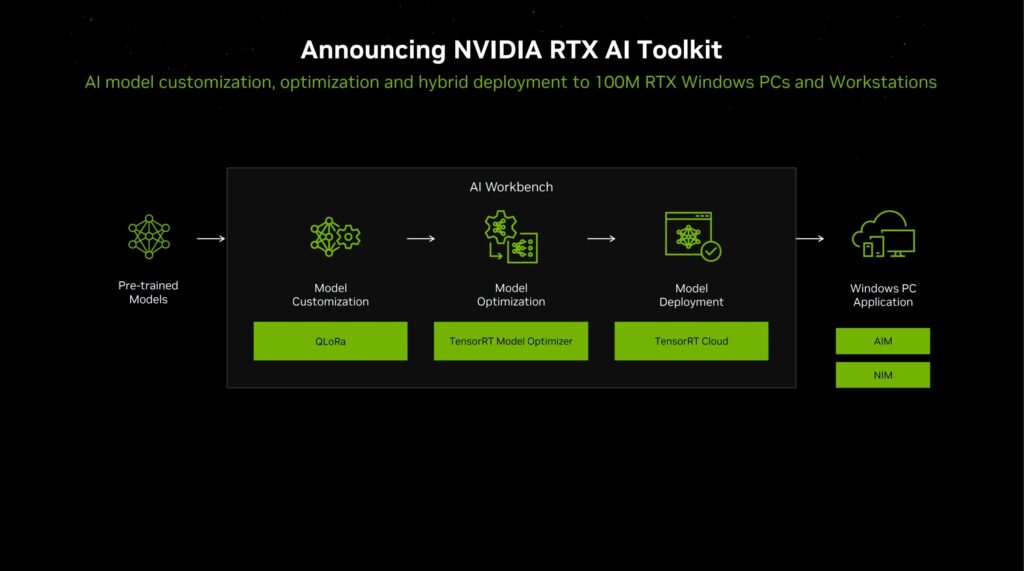
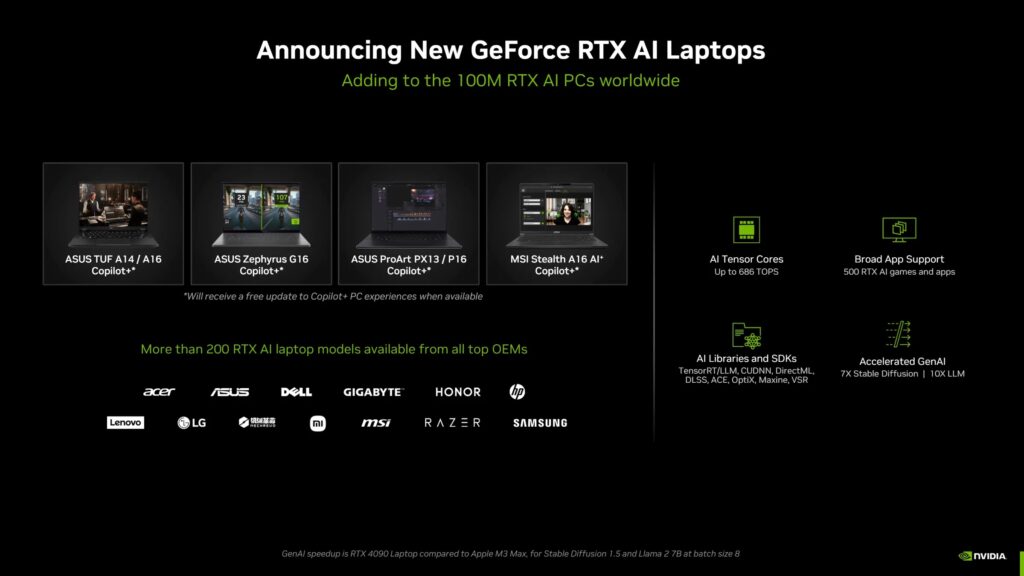
WSTS has adjusted its Spring 2024 forecast upwards, projecting a 16.0% growth in the global semiconductor market compared to the previous year. The updated market valuation for 2024 is estimated at USD611B. This revision reflects stronger performance in the last two quarters, particularly in computing end-markets. For 2024, mainly two Integrated Circuit categories are anticipated to drive the growth for the year with double digit increase, Logic with 10.7% and Memory with 76.8%. Conversely, other categories such as Discrete, Optoelectronics, Sensors, and Analog Semiconductors are expected to experience single-digit declines. The Americas and Asia Pacific regions are projected to see significant growth, with increases of 25.1% and 17.5%, respectively. In contrast, Europe is expected to show marginal growth of 0.5%, while Japan is forecasted to see a slight decline of 1.1%. (The Elec, WSTS)
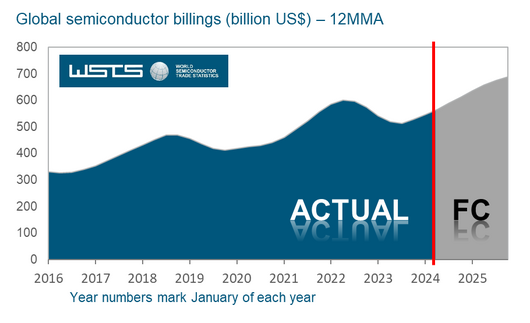
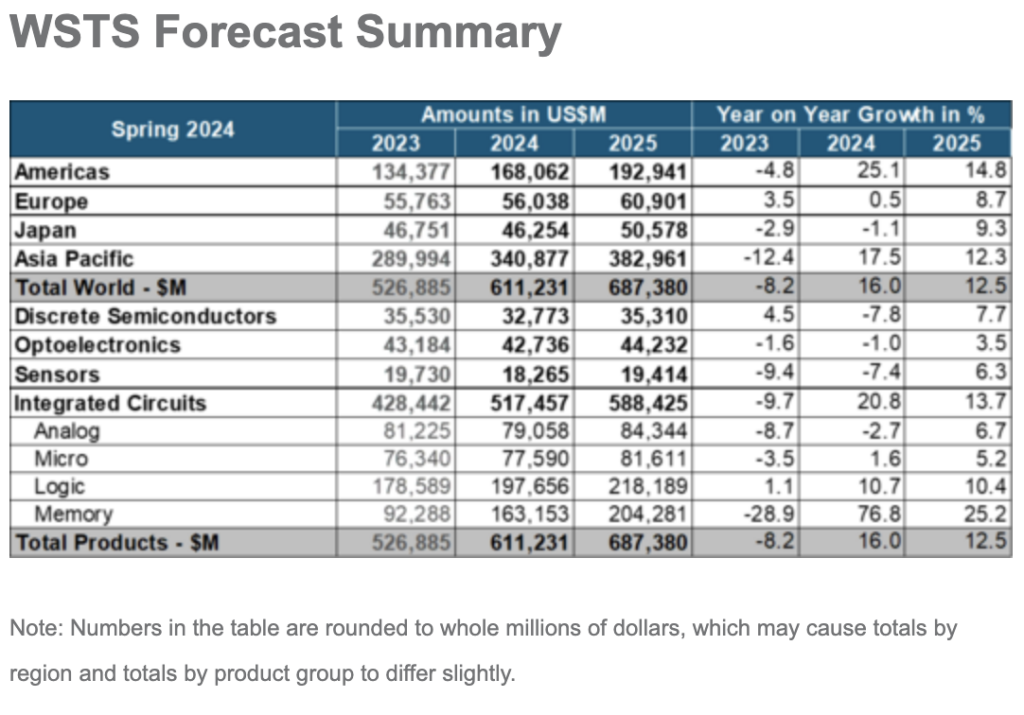
MediaTek is allegedly developing an Arm-based personal computer chip that will run Microsoft’s Windows operating system. Microsoft has unveiled a new generation of laptops that feature chips designed with Arm Holdings tech which provide enough horsepower to run the artificial intelligence applications executives said were the future of consumer computing. The MediaTek chip is geared toward this effort. The MediaTek PC chip is set to launch late 2025 after Qualcomm’s exclusive deal to supply chips for laptops expires. (Neowin, Reuters)

According to DSCC, foldable smartphone panel shipments rose 46% YoY in 1Q24 to 3.94M. Huawei dominated foldable smartphone panel procurement in 1Q24 with a 55% share, its highest ever, with the Huawei Mate X5 and Pocket 2 accounting for over 50% of all foldable panels purchased in 1Q24. For all of 2024, Samsung’s share of foldable smartphone panel procurement is expected to fall from 54% to 48% at over 13M panels, followed by Huawei with a 28% share, up from 18% and Honor with a 10% share, up from 9%. There is expected to be panel procurement for 38 different models in 2024, up from 35 in 2023. Samsung is expected to account for 3 models in the top 10 with Huawei accounting for 4 and Honor accounting for 2. Samsung Display (SDC) is expected to hold a 57% to 25% advantage in 2Q24 over BOE and an even larger advantage in 3Q24 as the Z Flip6 and Z Fold6 ramp. For all of 2024, SDC is expected to lead BOE with a 54% to 28% share advantage. (Phone Arena, Twitter, DSCC)
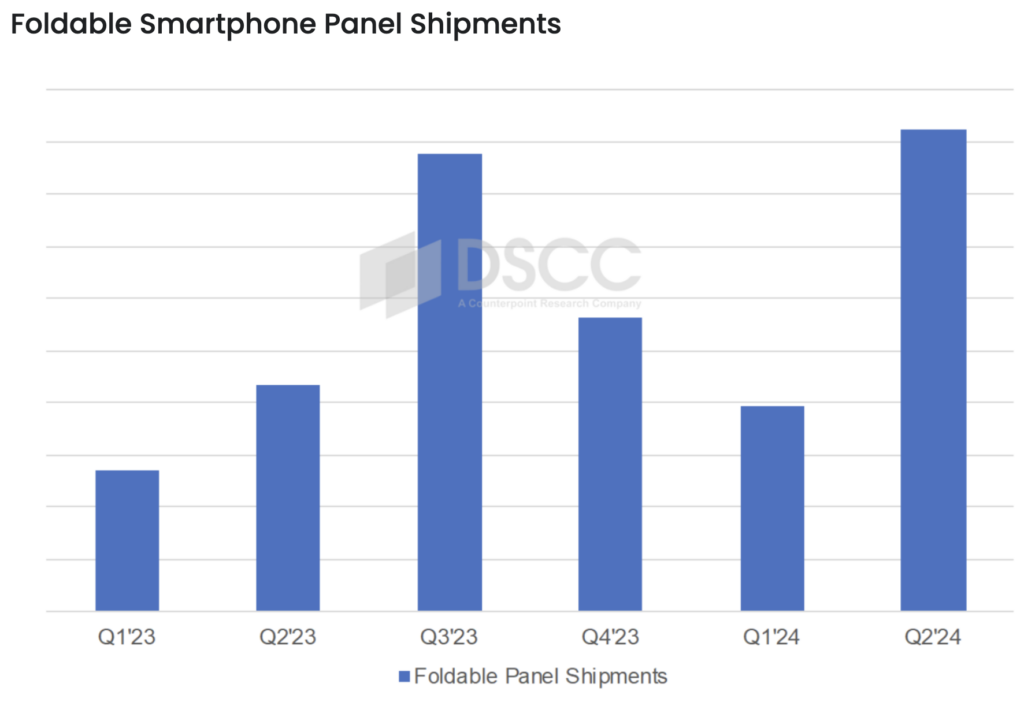
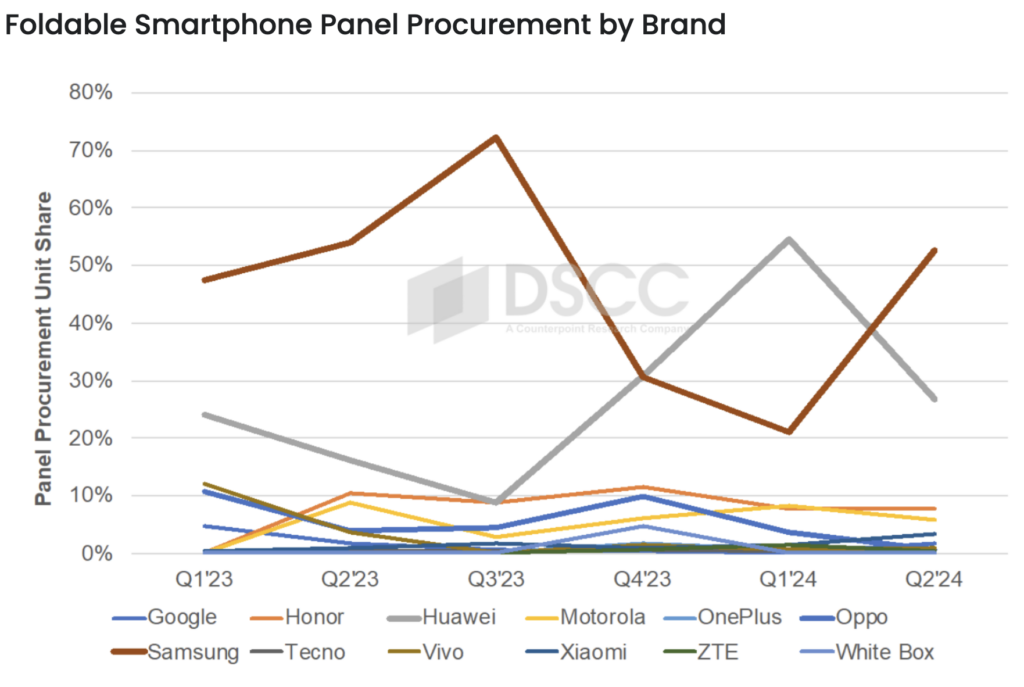
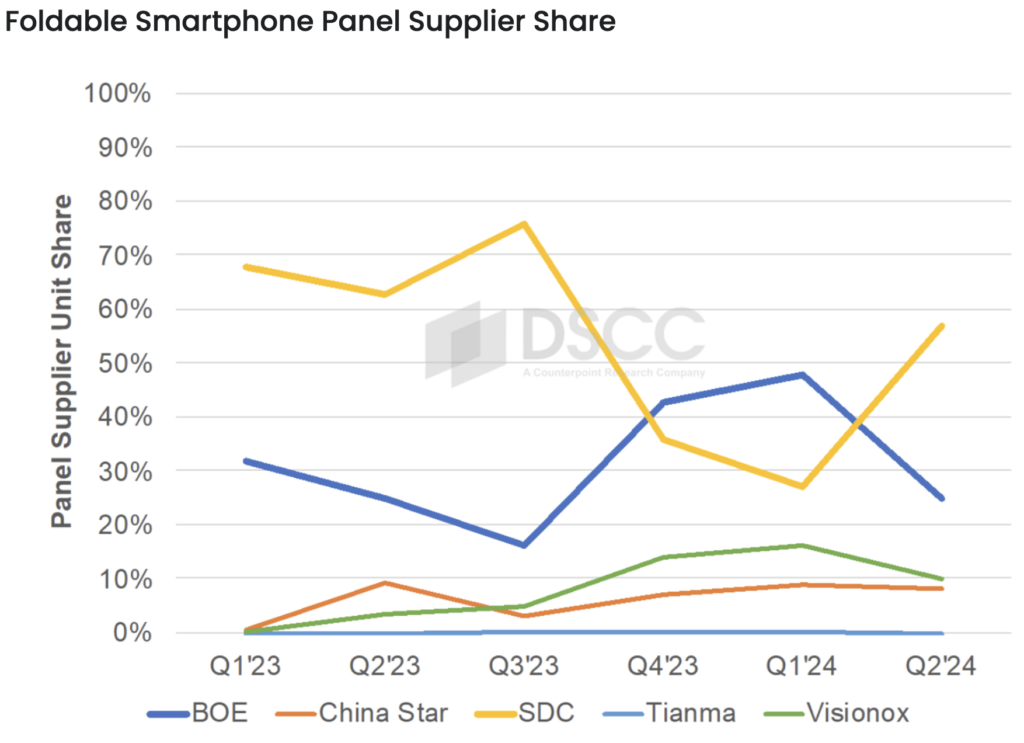
Haitong International analyst Jeff Pu says that Apple’s 7.9” foldable device, currently expected in 2026, will feature a “wrap around foldable design”. Pu first outlined Apple’s foldable timeline in May 2024, saying that the company is hoping to release a foldable 20.3” hybrid in 2025, followed by a foldable iPhone in 2026. (GSM Arena, 9to5Mac)
Samsung Display has showcased the world’s first QD-LED panel. It measures 18.2” and comes with a 3200×1800 (202 PPI) resolution with just 250 nits of brightness. Samsung Display says QD-LED offers a wide color gamut and high color accuracy for a superior viewing experience. Another advantage of QD-LED is that the stable material properties of the panels make their manufacture possible using Inkjet Printing (IJP). This increases manufacturing efficiency and lowers costs when producing large quantities. QD-LED panels also use environmentally-friendly cadmium-free quantum dots. Shoei Chemical of Japan, the new owner of Nanosys, which creates QD-LED, said it has plans to accelerate the development of the display technology, and it could go into full production by 2025 or 2026 at the earliest.(CN Beta, SamMobile, Techspot)
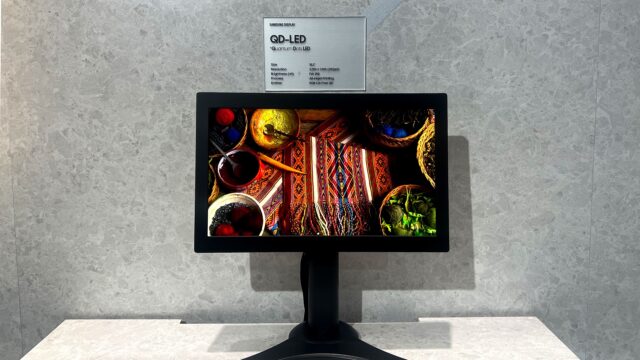
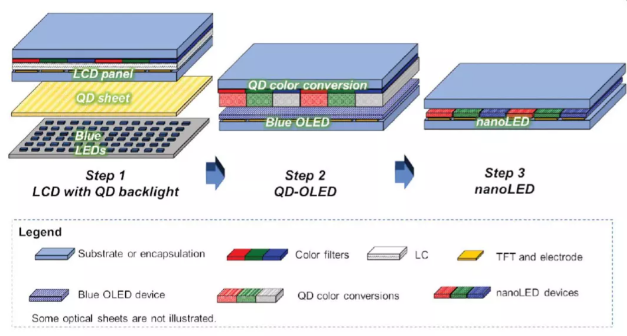

Samsung has used AI in many of the new features that debuted with the Galaxy S24 series, one such feature being Instant Slow-Mo. Since the launch of the Galaxy S24, Samsung has improved that feature with continuous updates. The Instant Slo-Mo feature will soon support HDR10+ videos. The Instant Slo-Mo feature uses AI to generate frames based on the current frames in the video. It then inserts those AI-generated frames between the original frames to convert any normal video into a slow-motion video. (Android Authority, SamMobile, Samsung)
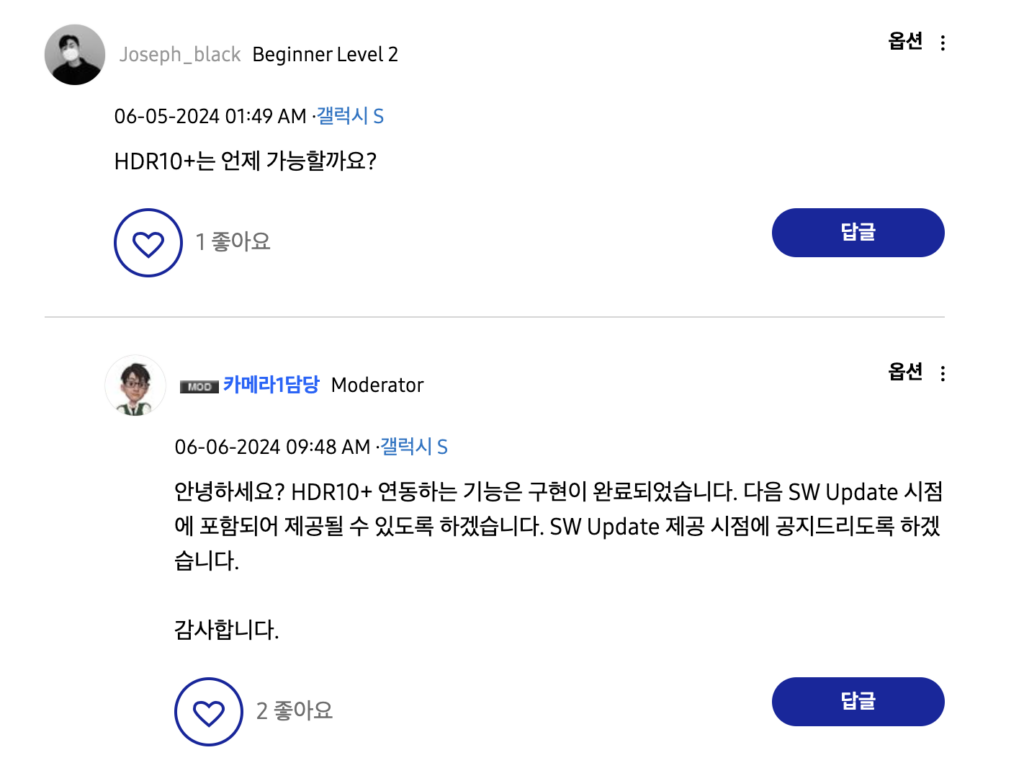

Micron Technology has announced the sampling of its next-generation GDDR7 graphics memory, which it says boasts the industry’s highest bit density for AI, gaming, and high-performance computing workloads. Micron’s 1-beta DRAM technology enables 32Gb/s high-performance memory in a power-efficient design. Micron GDDR7 memory provides over 1.5TB/s of system bandwidth, which is up to 60% faster than GDDR6, as well as four independent channels to optimize workloads. Micron GDDR7 memory will be available directly from Micron and through select global channel distributors and resellers in 2H24. (Digitimes, Micron)
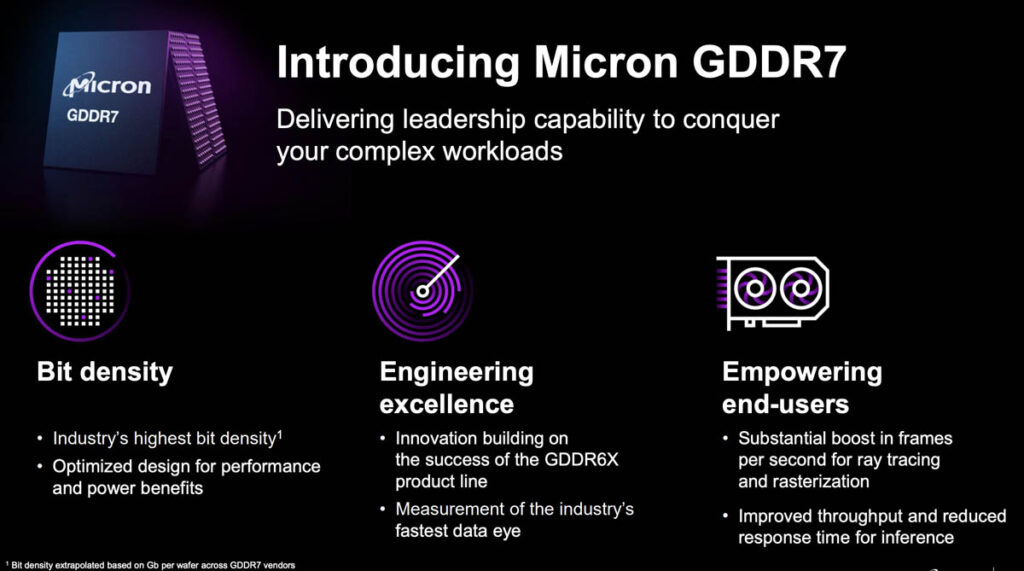
Graphics Double Data Rate (GDDR) is a synchronous double data rate dynamic random access memory (SDRAM) designed specifically for graphics processing units (GPUs). After more than 20 years of development, the GDDR family has evolved to the seventh generation. The GDDR family mainly includes GDDR, GDDR2, GDDR3, GDDR4, GDDR5 and GDDR6, as well as the latest GDDR 7. Currently, Samsung, Micron and SK Hynix have begun to provide GDDR7 memory samples, and the GDDR 7 battle is about to begin. (CN Beta, Sina)
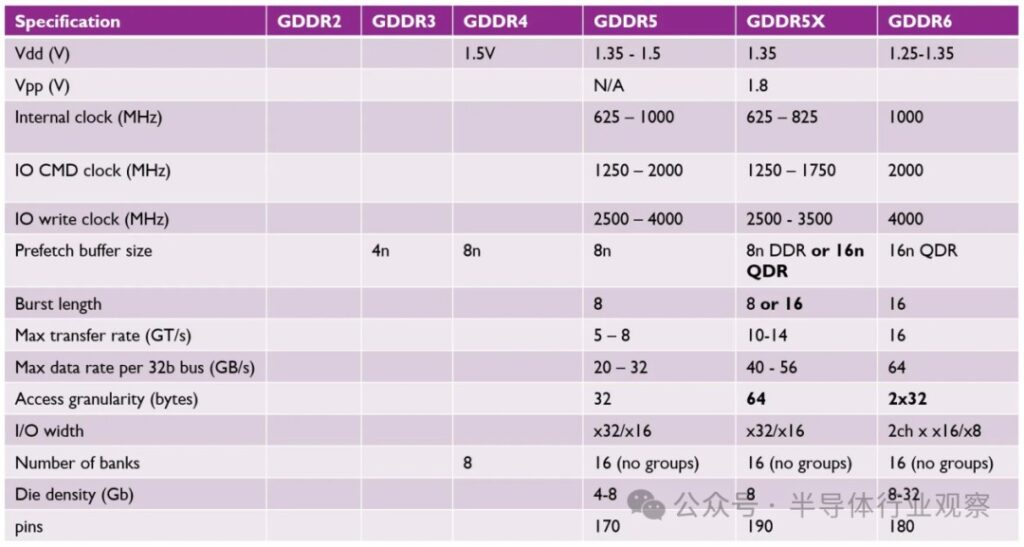
Micron Technology is reportedly looking to build a new factory to produce DRAM chips in the Hiroshima Prefecture, Japan, and will be operational by 2027 at the earliest. The total investment that Micron is looking at is JPY600B – 800B (around USD5.1B or so). The new DRAM factory will start construction in early 2026, with Micron to install new extreme ultraviolet lithography (EUV) machines. The Japanese government is also stepping up, approving JPY192B (USD1.3B) in subsidies to support the production of Micron’s next-generation DRAM chips at its Hiroshima plant. The Ministry of Economy, Trade, and Industry said in 2023 that the funding would help Micron introduce ASML’s leading EUV lithography machines. This is the key to driving generative AI, data centers, and self-driving technologies of the future. (Tweak Town, UDN, TrendForce)


Francis Wong, Head of Marketing for realme Global, has revealed that the company is currently testing 300W charging technology. In 2021, the company introduced their 65W DartCharge tech with GT Master Edition phone which can fully fuel its 4300mAh battery in 33 minutes. In 2022, realme released the GT Neo 3 with 150W charging support capable of taking a 4500mAh battery from 0 to 50% in just 5 minutes. With 300W, the phone reaches 50% charge in under 3 minutes and a full charge in just under 5 minutes. (Phone Arena, Gadgets360, Sina, Youtube, Twitter)
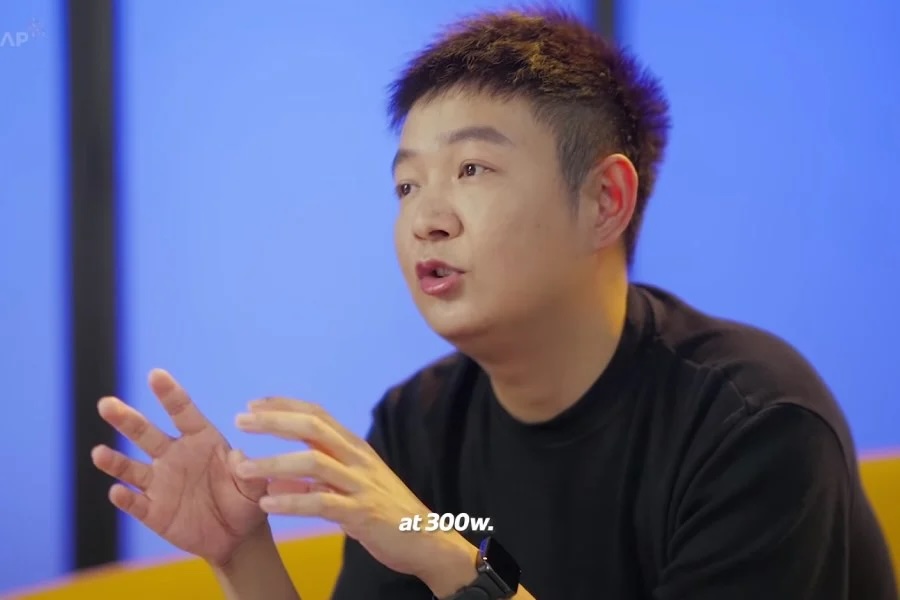

Apple has committed to providing a minimum of 5 years of iPhone security updates. The disclosure comes as part of Apple’s plan to comply with the UK’s Product Security and Telecommunications Infrastructure (PSTI) Act, which requires companies selling internet-connected products to meet new security standards. The law, which went into effect in Apr 2024, compels companies to define the minimum length of time it will provide security updates for a product. (The Verge, Android Authority, Apple)
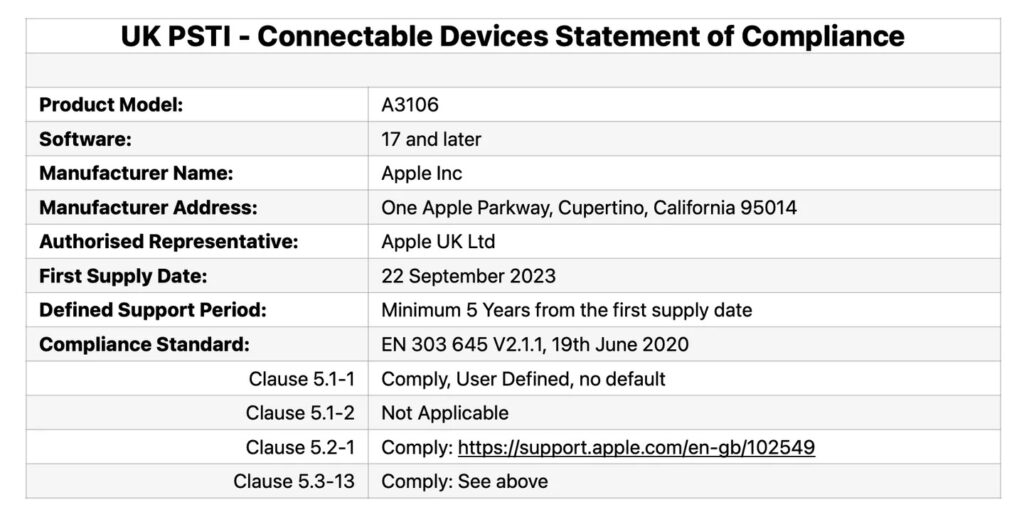
HTech has joined forces with nStore, a participant in the Open Network for Digital Commerce (ONDC), to make Honor products available across India. This partnership allows customers to purchase Honor smartphones, smartwatches, and earphones directly through the Paytm app, leveraging the expansive reach of the ONDC Network. By listing its products on the ONDC Network, HTech aims to tap into a wider audience and cater to diverse needs with its innovative technology. nStore, known for its “Online Union Offline” retail experience, empowers businesses to thrive in the digital marketplace. Their collaboration with HTech promises to provide a seamless and convenient shopping experience for consumers seeking cutting-edge Honor products.(Gizmo China, Business Today, India Times)

Apple has previewed iOS 18, the next major update to the operating system for the iPhone, with new customization features, a redesigned Photos app, and more. iOS 18 features new customization tools for the Home Screen. App icons now feature Dark Mode and users can tint them with a color to create a unique look. Apps can also now be placed anywhere on the Home Screen freely. The Control Center is redesigned and highly customizable with a new gallery. In Messages, tapbacks have been redesigned and users can now react with any emoji. Users can also schedule messages to send later, as well as format text with bold, italicization, underlining, and strikethrough. New text effects provide ways to emphasize words and phrases with automatic suggestions. Users can also now send and receive messages with satellite connectivity. The Photos app is completely redesigned in iOS 18. Users can now Lock apps with authentication, simultaneously hiding information from Search and Siri. iOS 18 also includes a new way to connect accessories more seamlessly.(MacRumors, Apple)
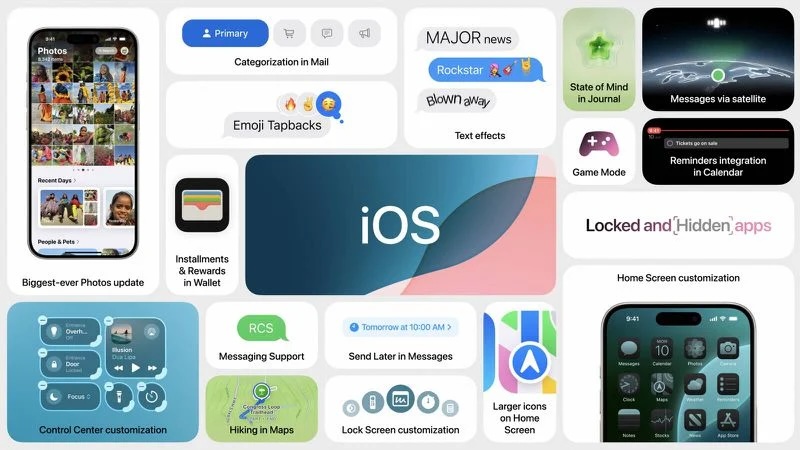

Apple has announced macOS 15 Sequoia, the next version of its Mac operating system featuring several new AI capabilities also announced for iPhone with iOS 18, in addition to a new Password app, a major Safari update, and a new Continuity feature called iPhone Mirroring. At the heart of the new AI features is “Apple Intelligence”, which Apple says is a deeply integrated, personalized AI experience for Apple devices that uses cutting-edge generative artificial intelligence to enhance user experiences across iPhone, iPad, and Mac. According to Apple, the service “combines the power of generative models with personal context to deliver intelligence that’s incredibly useful and relevant”. Apple Intelligence “understands and creates language and images, takes action across apps, and draws from personal context, simplifying and accelerating everyday tasks”. (MacRumors, Apple, Arstechnica)
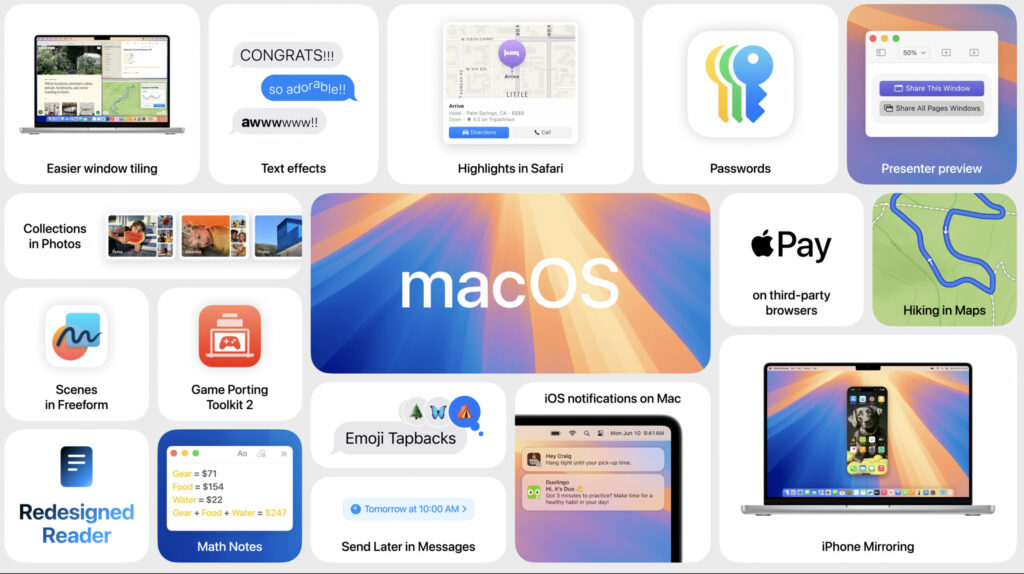
Apple has previewed iPadOS 18, a major update to the operating system for the iPad that introduces a new Calendar app, a redesigned systemwide tab bar, and more. iPadOS 18 brings over many of the new features and improvements introduced in iOS 18 to the iPad such as the redesigned Photos app and new Home Screen customization tools. In iPadOS 18, a new floating tab bar morphs into the navigation sidebar. The tab bar is also customizable to keep favourites within easy reach. It is available across the system. There is also a new document browser in Pages, Numbers, and Keynote. iPadOS 18 also brings the Calculator app to the iPad for the first time, with new features like history and unit conversions. Math notes allows users to solve expressions when writing with the Apple Pencil.(MacRumors, Apple)
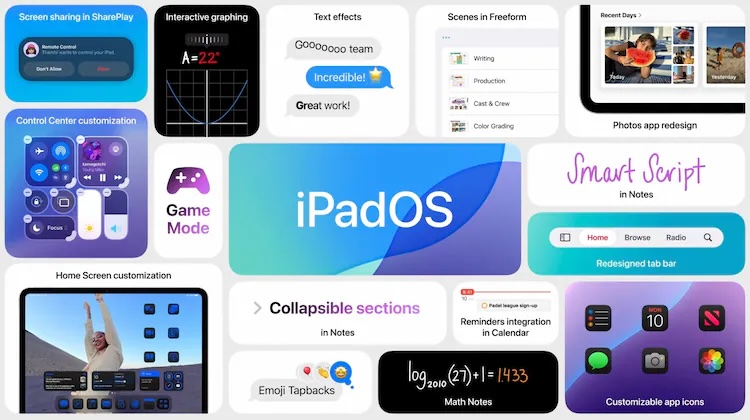

Jabra has announced the discontinuation of its popular Elite earbuds line. The decision, announced by Jabra’s parent company GN, is part of a strategic shift to focus on more profitable areas of the business. GN CEO Peter Karlstromer acknowledged Jabra’s success in competing with top brands and introducing groundbreaking innovations in the true wireless earbuds category. However, he cited the changing market dynamics and the difficulty of achieving a satisfactory return on investment as reasons for the decision to wind down the Elite and Talk lines.(Jabra, Android Authority)
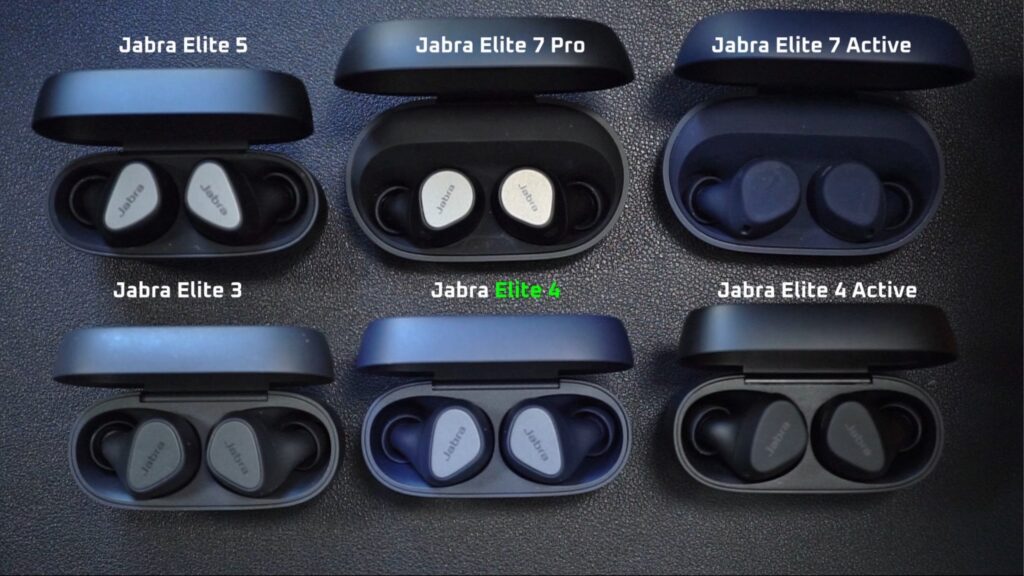
Apple has announced the next version of watchOS, the next major software update for the Apple Watch that introduces several new health and workout features. Activity Rings can now be adjusted by day of the week and paused for a rest day, allowing users to keep their award streak going. Users can set workouts to alert a friend that they have been safely completed, such as a late-night run. watchOS 11 includes a new “training load” feature, helping users to track intensity over time. A new algorithm uses heart rate, altitude, workout duration, and age and weight data to give a calculation of user’s estimated effort rating and training load. A new Vitals app provides an overview of daily health, comparing daily health statistics to historical data and highlighting when health data is outside user’s typical range. (Tom’s Guide, Neowin, MacRumors, Apple)
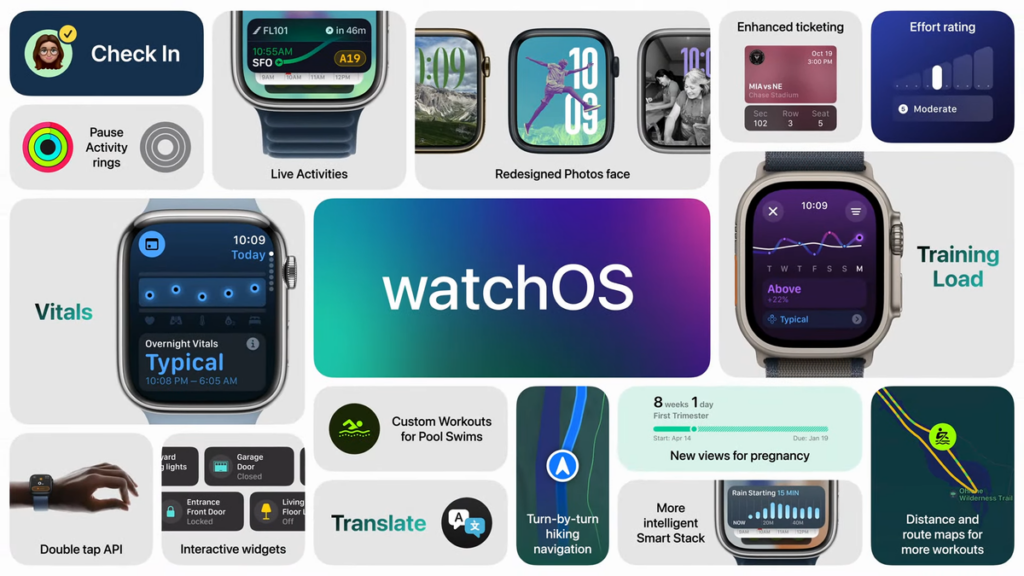

Apple has announced visionOS 2, which brings with it productivity enhancements and “new immersive experiences”. visionOS 2 includes a range of new features and changes, such as a redesigned Photos app with SharePlay support, the ability to turn existing 2D photos into spatial photos with machine learning, new hand gestures for frequently used features like Home View and Control Center, a larger ultra-wide version of Mac Virtual Display that is equivalent to two 4K monitors side by side, and support for a physical mouse. visionOS 2 also adds a basic feature that was missing on the Vision Pro at launch: the ability to rearrange apps. Travel Mode gains support for trains on visionOS 2, while the Guest User option can now save a guest’s eye and hand data for 30 days.(MacRumors, Apple, TechCrunch)
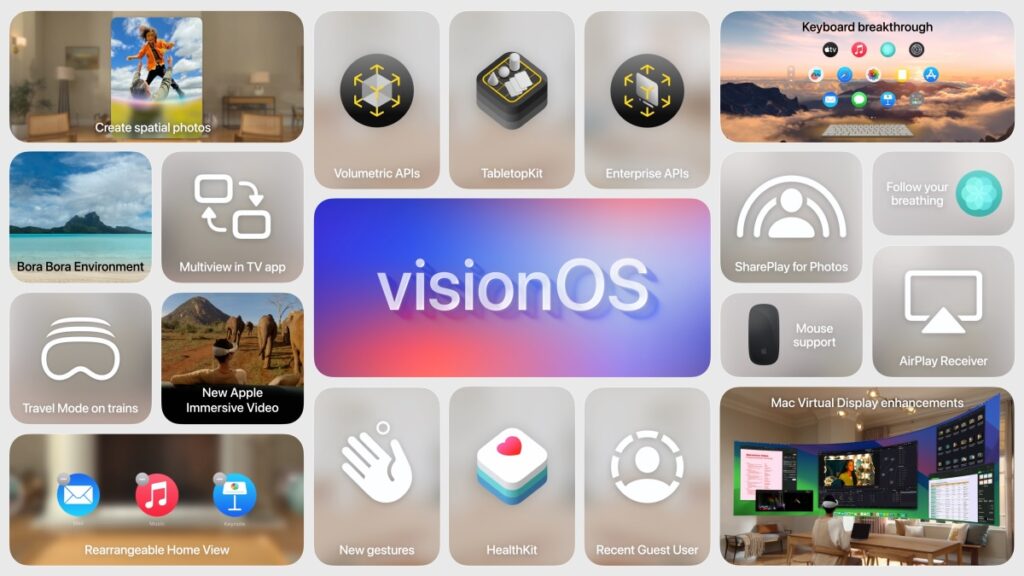

Apple has introduced Apple Intelligence, the personal intelligence system for iPhone, iPad, and Mac that combines the generative models with personal context to deliver intelligence. Apple Intelligence is deeply integrated into iOS 18, iPadOS 18, and macOS Sequoia. Apple has stated some of the features of Apple Intelligence will include ways for users to use AI to write or rewrite emails, summarize documents, and proofread texts in its Mail, Notes, and Pages apps along with unnamed third-party apps. Apple will have its own AI art maker, Image Playground, as part of Apple Intelligence. In addition, Apple has also introduced a new feature to let people create their own emojis with AI, called Genmoji. Apple will also include a feature in its Photos app called Clean Up, which can find distracting elements in a photo and get rid of them. Apple is also using AI to improve interactions with its Siri digital assistant to make them more natural with voice commands. OpenAI and Apple are partnering to integrate the GPT-4o AI model into iOS 18, iPadOS 18, and macOS Sequoia.(TechCrunch, Neowin, Apple)
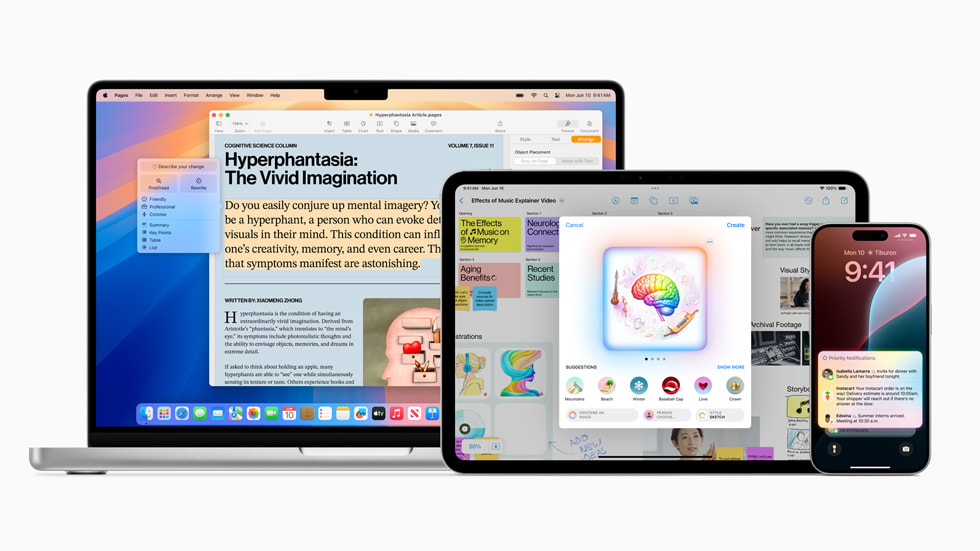
Apple has revealed a partnership with OpenAI to bring ChatGPT natively to iOS 18. Apple’s Senior Vice President of Machine Learning and AI Strategy, and Craig Federighi, Senior Vice President of Software Engineering have elaborated on Apple’s AI goals, and hinted at a possible agreement with Google Gemini in the future. The decision to focus on ChatGPT at the start was because Apple wanted to “start with the best”, according to Federighi.(Android Central, 9to5Mac)
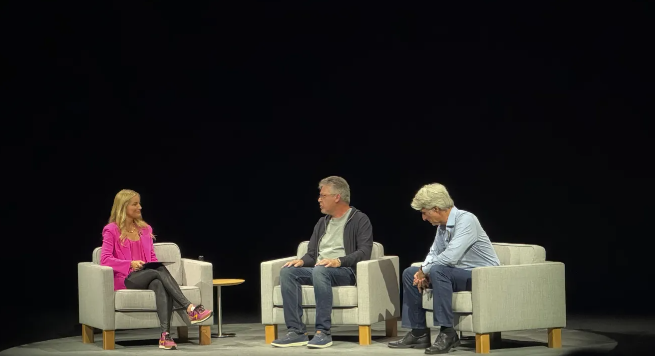
PwC has signed an agreement with Microsoft-backed AI firm OpenAI to offer ChatGPT Enterprise, the business-focused version of its generative AI chatbot, to employees and clients. PwC said the deal will see its workers and clients gain access to the latest tools from OpenAI, including its ChatGPT-4o model and new capabilities focused on voice and image. PwC will hand ChatGPT Enterprise licenses to more than 100,000 employees — 75,000 in the U.S. and 26,000 in the U.K. It marks the first time OpenAI has agreed a resale model of selling its popular AI products. (CN Beta, PwC, Reuters, CNBC)

Anthropic is releasing a new feature for its AI chatbot Claude that will let anyone create an email assistant, a bot to purchase shoes, or other personalized solutions. It is called “tool use” (or “function calling”), and it hooks up to any external API. For instance, the tool can analyze data to create personalized product recommendations based on a user’s purchase history or provide quick responses to customer inquiries, such as tracking order status or offering real-time technical support. To spin up an assistant, all it needs is access to an API and someone who knows how to code. Also, this tool can work with images, enabling applications that analyze visual data. An example Anthropic gave is that a virtual interior design consultant can use this tool to process room images and provide personalized decor suggestions.(CN Beta, The Verge, Anthropic)


Amazon has agreed to acquire MX Player as part of its strategy to expand its portfolio in India’s thriving market for video streaming services. MX Player will add to Amazon’s existing video services like Prime Video and MiniTV. The deal is valuing MX Player at USD50-100M. Amazon did not disclose the size of the acquisition. (TechCrunch, Money Control, India Times)
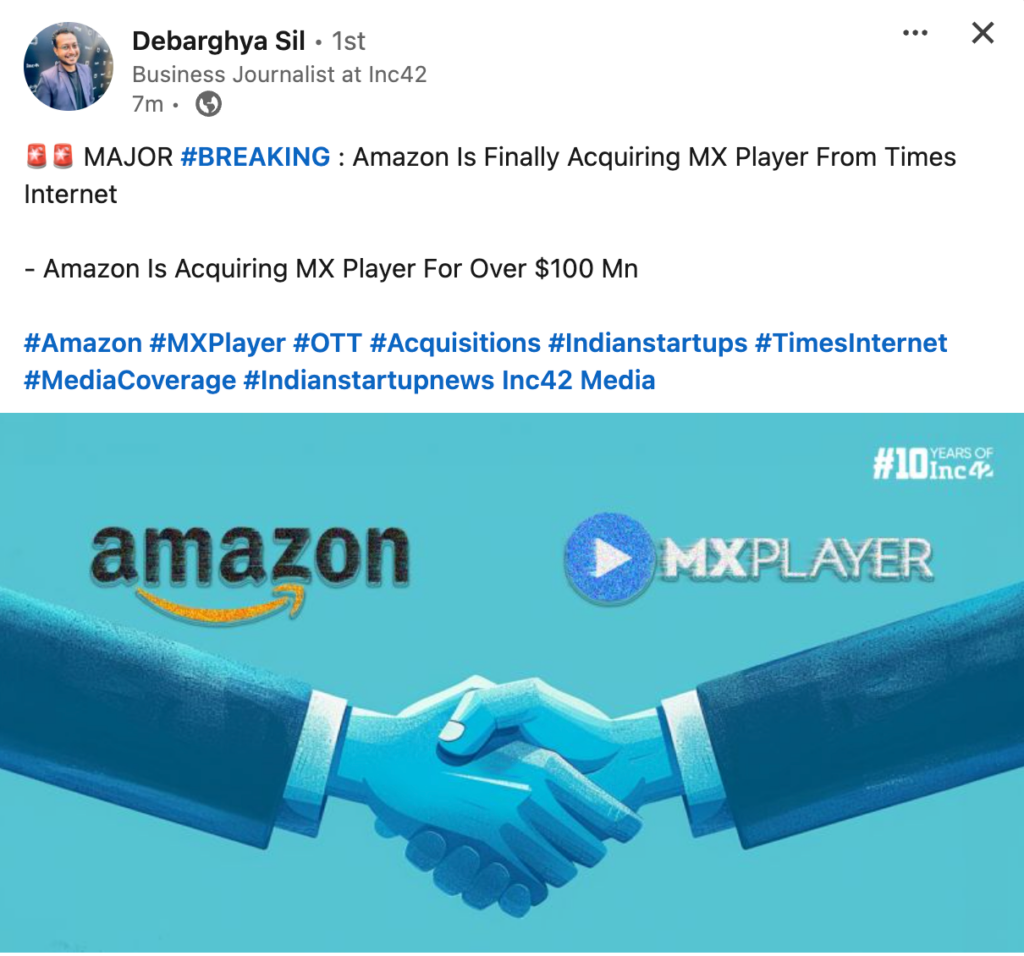

Stock-trading app Robinhood has acquired crypto exchange Bitstamp. Robinhood said it expects the final transaction value to be around USD200M and the deal to close in 1H25. Robinhood is known for its stock-trading services, allowing ordinary consumers to invest in some of the world’s largest publicly traded companies. Founded in Europe in 2011, Bitstamp is among the world’s oldest cryptocurrency exchanges, allowing companies and individuals to trade all manner of cryptocurrency. It was acquired by a Belgian investment company called NXMH in 2018 and Ripple bought a stake in 2023. (TechCrunch, Robinhood)
